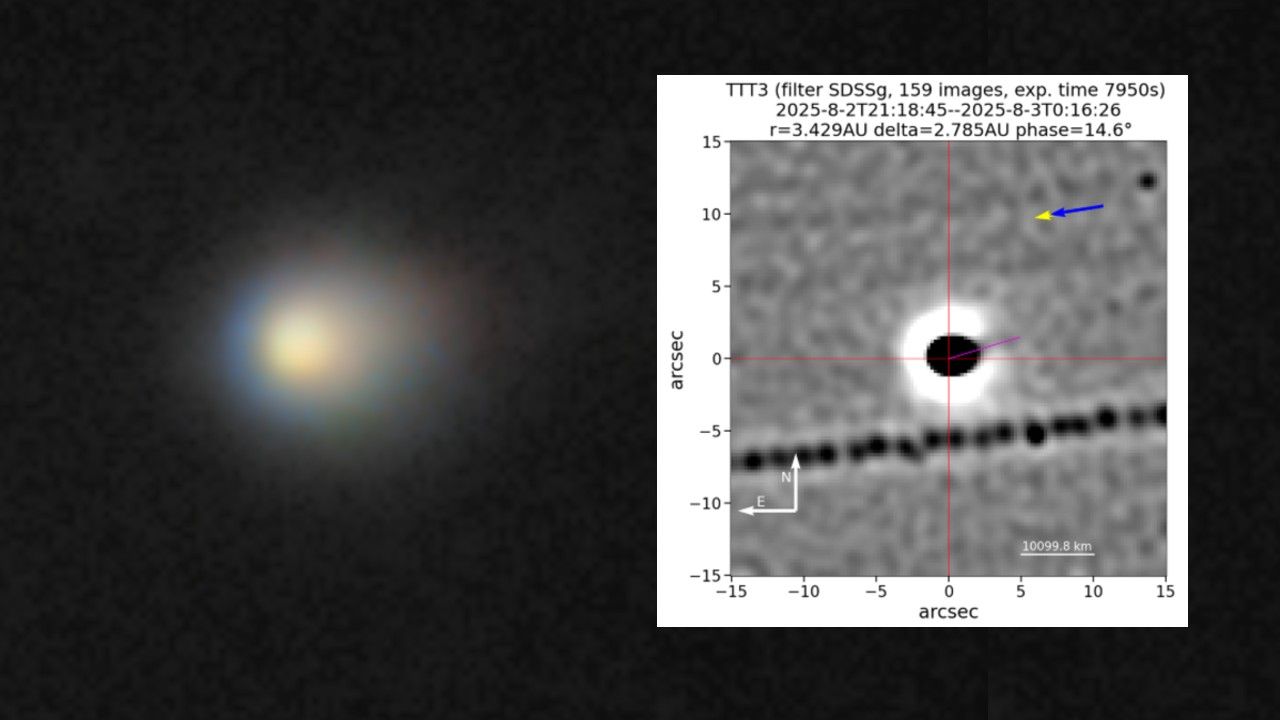An interstellar comet is dramatically jetting off ice and dust into space, a new image shows.
The comet, called 3I/ATLAS, is sending out a jet of material towards the sun as our nearest star warms up some of its surface. The composite image shows the nucleus or icy, rocky central core of 3I/ATLAS as a large and black dot, along with a white glow — the comet’s coma, or atmosphere. The jet is marked in purple and is blasting off towards the direction of the sun, which is typical behavior of comets in the solar system as well.
Astronomers received notice of the jet Oct. 15 in the Astronomer’s Telegram, an announcement service for the astronomy community with editor-in-chief Robert Rutledge, an associate professor at Montreal’s McGill University.
Footage of the jet was captured on Aug. 2, and combines 159 exposures of 50 seconds each. It was taken with the Two-meter Twin Telescope at Teide Observatory in Tenerife, which is in the Canary Islands.
“This is the usual,” Miquel Serra-Ricart, astrophysicist and chief science officer at the Light Bridges private research institution, which co-manages Teide, told our sister site LiveScience in an email. Serra-Ricart was the individual who posted the new images, which are not yet peer-reviewed; he pointed out that the comet’s tail is also pointing away from the sun, which is typical of these icy objects.
While comets do warm up when they get close to the sun, they don’t warm up in all spots in the same fashion. The areas facing the sun heat up fastest, and if there is a weaker area on the surface of the comet, sublimated gases under the surface can burst through — causing these sun-facing jets.
Serra-Ricart estimated the jet could be as far as 6,200 miles (10,000 km) from 3I/ATLAS’ surface, which is more than twice the equivalent distance across the largest part of the United States. The jet is likely made up of carbon dioxide and dust particles—just like what was spotted by NASA’s James Webb Space Telescope back in August.
These jets can begin to fan out as the nucleus of the comet rotates. Some of the material will stay in the coma, while the rest will fall into the comet’s tail after pressure from the sun — known as the solar wind — forces it there. Solar system comet C/2020 F3 NEOWISE, which was visible to the naked eye, showed just that kind of behavior back in 2020 in Hubble Space Telescope images.
First Appeared on
Source link












